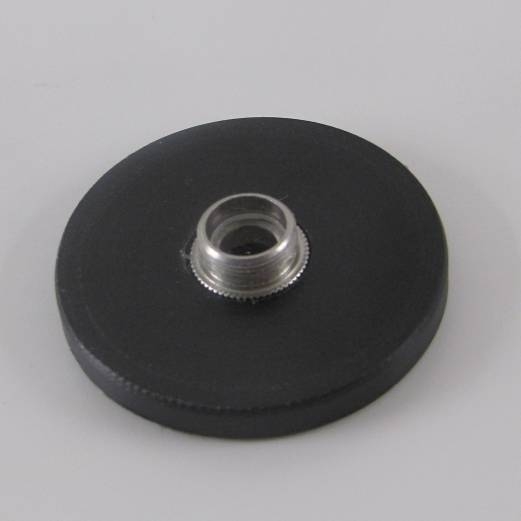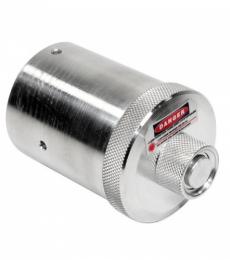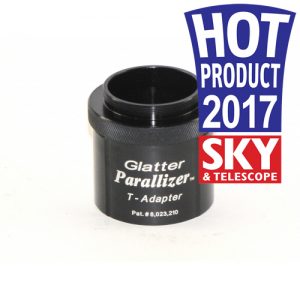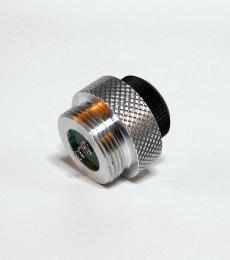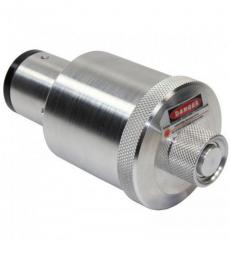SI-BARATT—Barlow Laser Collimator Attachment
$80.00
Description
- Attaches to laser aperture for making the primary mirror adjustment quick, efficient and compact.
- The Howie Glatter Barlow Laser Collimator Attachment diverges the beam just behind your barlow lens for accurate alignment.
- Allows the user to make solo adjustments.
- The Howie Glatter Barlow Laser Collimator Attachment fits the threaded aperture of any of Glatter holographic collimator.
- Disc attachment with a small mounted barlow lens and flat white front surface screen.
Howie Glatter Laser Collimator Barlow Attachment
When it comes to lasers and collimation, one of the most trusted names in the business is guru Howie Glatter. His uncompromising quality and dedication to above average products, not only put his name above the rest – but in demand as the finest available on today’s market. Usually a manufacturer doesn’t take the time to explain to a customer exactly why their product excels over others – or why it performs better – but not Howie. Here’s what he has to say about his new Howie Glatter Laser Collimator Barlow Attachment:
“Normally, a telescope takes parallel light rays from a distant star and converges them to a point at the eyepiece focus. Barlowed laser collimation takes advantage of the fact that a telescope will work in reverse. Placing a colllimator into a barlow lens will cause the parallel rays of laser light to diverge, apparently from a point just behind the Barlow lens. The diverging rays projected from the laser-Barlow combination in the focuser are turned into a beam of all-parallel rays when they are reflected from the primary, except for where the center mark on the primary prevents the mirror from reflecting. This reflected beam, containing a superimposed shadow of the collimation target, is projected up to the secondary, and then reflected to the focuser.
If you placed your laser collimator into a conventional barlow lens, you need to attach a paper circle to the end of the barlow as a screen to view the shadow on. The paper circle needs to have a hole in its center to pass the outgoing beam. The primary tilt is now adjusted to center the target shadow around the hole. The position of the shadow on the screen is affected very little by motion of the illuminating beam. It is almost startling to see the shadow remain stationary as you “bend” the collimator and Barlow around in the focuser, and the fuzzy perimeter of the diverged laser beam moves all over the place.
My Self-Barlowed collimator has a Barlow attachment that screws to the laser aperture for making the primary adjustment. The Barlow attachment is a disc with a small barlow lens mounted in it’s center hole, and a flat white front surface as a screen. It makes the Barlow procedure more compact and convenient. The Barlow attachment fits the threaded aperture of any of my holographic collimators, and it can be purchased separately as an additional accessory by those who already have the holographic collimator.”
Easy… Accurate… and Precise. What more could you ask?
Additional information
| Weight | 0.25 lbs |
|---|---|
| Dimensions | 6 × 4 × 4 in |
| Collimator Version | New Version – Bigger & coarser 3/8-32 thread diameter – Identified by a visible ring, DISCONTINUED – Old Version – Super fine 5/16-56 thread diameter – No visible ring |

